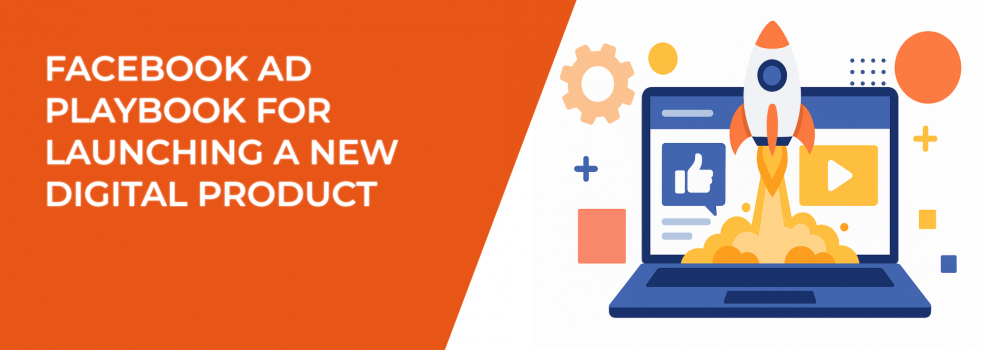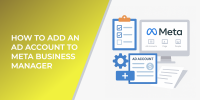Launching a digital product is exciting. But it can also feel overwhelming. How do you reach the right people, stand out in their feed, and convince them to take action?
Facebook Ads give you the chance to do all three. The key is having a clear plan. Below is a playbook with practical steps, strategies, and examples you can use for your next launch.
Step 1: Define Your Goal
Every launch starts with a question: what do you want Facebook Ads to achieve?
-
Awareness — let people know your product exists.
-
Lead generation — collect emails for a nurture sequence or free trial.
-
Sales — drive direct conversions.
Tip: Choose one primary goal. If you split focus, Facebook’s algorithm won’t know what to optimize for.
Example: If your digital course costs $49, you may want to optimize for sales. But if you’re launching a $999 membership, collecting leads first with a free workshop might work better.
When you’re setting up campaigns, choosing the right objective is critical. If you’re not sure which to pick, check out our guide on Meta Ad Campaign Objectives Explained: How to Choose the Right One.
Step 2: Know Your Audience
Different people need different messages. Don’t run one generic ad for everyone.
Create audience tiers:
-
Cold prospects — people who match your ideal customer but don’t know you yet.
-
Use educational or problem-focused ads.
-
Example: “Struggling to organize your team’s projects? See how digital tools can save hours every week.”
-
-
Warm audiences — people who visited your website, followed you, or engaged with content.
-
Use ads that show benefits and build trust.
-
Example: carousel ads with product features, demo videos, or case studies.
-
-
Hot audiences — people who started checkout or showed strong intent.
-
Use urgency or special offers.
-
Example: “Your trial spot is still open — claim it before the offer expires.”
-
Tip: Always set up separate ad sets for these groups. Messaging that works for one won’t work for the others.
Targeting makes or breaks a launch. For a deeper dive into segmentation tactics, read Facebook Ad Targeting 101: How to Reach the Right Audience.
Step 3: Craft Winning Creatives
Your ad creative decides if people stop scrolling. Good design matters, but clarity and value matter more.
-
Show the problem and solution. A short video of “before vs after” is powerful.
-
Use product mockups. Screenshots, demos, or animations make digital products real.
-
Try multiple formats. Test static images, carousels, and reels. Don’t rely on just one.
Example: A SaaS tool could run a 15-second video showing “3 clicks to automate your tasks” versus a carousel breaking down each feature.
Tip: Add captions to videos. Many users scroll with the sound off.
Step 4: Structure Campaigns the Smart Way
Don’t overcomplicate your campaigns. Keep it clean and scalable.
-
Campaign 1: Prospecting (target cold audiences).
-
Campaign 2: Retargeting (target warm + hot audiences).
-
Inside each campaign: run 2–3 ad sets with different creatives.
Tip: Start with broad targeting plus interest filters. Then refine once you see what’s working.
Example: If “digital marketing professionals” outperform “small business owners,” shift budget accordingly.
Confused by Facebook’s campaign structures? Our breakdown of Meta Campaigns Explained: How to Structure High-Performance Campaigns.
Step 5: Retarget Like a Pro
Most people won’t buy after seeing your ad once. Retargeting closes the gap.
Create custom audiences for:
-
Visitors in the last 30 days.
-
People who watched 50%+ of your videos.
-
Abandoned carts.
Retargeting strategies:
-
Show reviews or testimonials.
-
Offer free trials or discounts.
-
Highlight a guarantee or refund policy.
Example: A software tool could show retargeting ads with user reviews saying, “Saved me 10 hours per week.”
Need help setting up the technical side? Follow our guide on How to Set Up Facebook Retargeting.
Step 6: Test and Optimize
Great advertisers don’t guess — they test.
-
Test 3–4 creatives at once.
-
Change only one variable at a time (image, headline, CTA).
-
Let ads run 3–5 days before making changes.
Tip: Look beyond CTR. Check cost per result and conversion rates. High clicks with low conversions mean the landing page may be the issue.
Example: If one ad gets $0.80 clicks but $20 cost per sign-up, while another gets $1.20 clicks but $7 sign-ups — the second one is better.
Step 7: Plan for After the Launch
A launch isn’t a one-time event. Use what you’ve learned to grow long term.
-
Build lookalike audiences from your buyers.
-
Test new interests based on who converted.
-
Rotate fresh creatives every 2–3 weeks to prevent fatigue.
Example: If your top buyers were aged 25–34, you can test a 1% lookalike of that group to scale without losing quality.
Final Thoughts
Launching a digital product with Facebook Ads doesn’t have to be a gamble. With clear goals, sharp targeting, strong creatives, and smart retargeting, you can build campaigns that sell.
The most successful launches come from testing, learning, and adapting fast. Every campaign gives you data. Use it — and your next launch will be even stronger.

